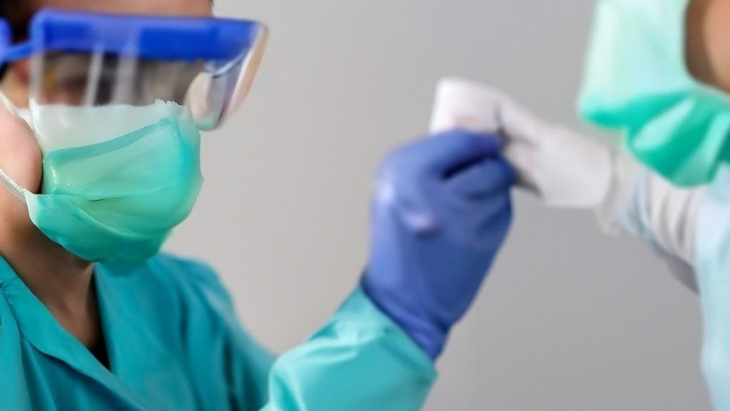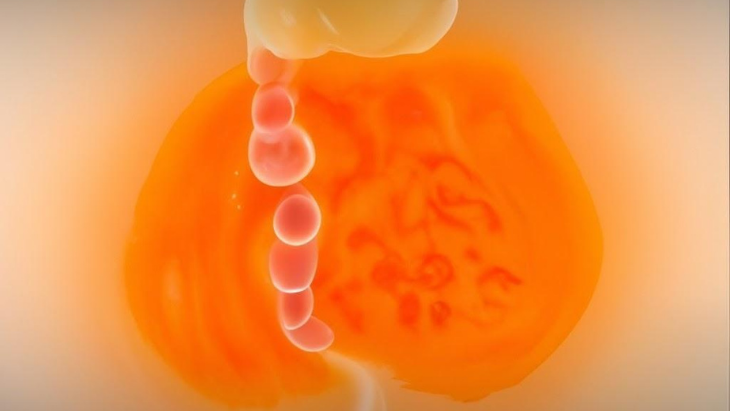Norovirus is a highly contagious gastrointestinal illness that can cause vomiting, diarrhea, and stomach cramps. It is spread through contact with contaminated food or water, or through contact with an infected person. There is no specific treatment for norovirus, but symptoms usually resolve on their own within a few days.
If you think you may have norovirus, there are a few ways to get tested. One way is to have a stool sample tested for the presence of norovirus DNA. Another way is to have a blood test for the presence of antibodies to norovirus.
In this article, we will provide a brief overview of the different ways to test for norovirus. We will also discuss the pros and cons of each testing method.
Norovirus Test
Norovirus is a highly contagious gastrointestinal illness that can cause vomiting, diarrhea, and stomach cramps. It is spread through contact with contaminated food or water, or through contact with an infected person.
There are two main ways to test for norovirus: stool testing and blood testing.
Stool testing is the most common way to test for norovirus. A sample of stool is collected and sent to a laboratory for analysis. The laboratory will look for the presence of norovirus DNA in the stool sample.
Blood testing is less common than stool testing. A sample of blood is collected and sent to a laboratory for analysis. The laboratory will look for the presence of antibodies to norovirus in the blood sample.
Which test is right for you?
The best way to test for norovirus depends on your individual situation. If you are experiencing symptoms of norovirus, stool testing is the best way to confirm the diagnosis. If you are concerned about having been exposed to norovirus, blood testing may be a good option.
What are the pros and cons of each testing method?
Stool testing
Pros:
- Relatively accurate
- Can be used to diagnose norovirus in the early stages of infection
Cons:
- Requires a stool sample
- May not be positive if the person has already started to recover from the infection
Blood testing
Pros:
- Can be used to determine if a person has been exposed to norovirus, even if they are no longer showing symptoms
Cons:
- Not as accurate as stool testing
- Requires a blood sample
How to Get a Norovirus Test
Norovirus is a highly contagious gastrointestinal illness that can cause vomiting, diarrhea, and stomach cramps. It is spread through contact with contaminated food or water, or through contact with an infected person.
There are two main ways to test for norovirus: stool testing and blood testing.
Stool testing is the most common way to test for norovirus. A sample of stool is collected and sent to a laboratory for analysis. The laboratory will look for the presence of norovirus DNA in the stool sample.
Blood testing is less common than stool testing. A sample of blood is collected and sent to a laboratory for analysis. The laboratory will look for the presence of antibodies to norovirus in the blood sample.
How to get a stool test
To get a stool test, you will need to collect a sample of your stool. You can do this by using a clean container and collecting a small amount of stool from the toilet bowl. Once you have collected the sample, you will need to label the container and bring it to a doctor or laboratory.
How to get a blood test
To get a blood test, you will need to visit a doctor or laboratory. The doctor or laboratory technician will draw a blood sample from your arm. The blood sample will then be sent to a laboratory for analysis.
Which test is right for you?
The best way to test for norovirus depends on your individual situation. If you are experiencing symptoms of norovirus, stool testing is the best way to confirm the diagnosis. If you are concerned about having been exposed to norovirus, blood testing may be a good option.
Getting tested for norovirus can be helpful if you are experiencing symptoms or if you have been exposed to someone who is infected. If you think you may have norovirus, talk to your doctor about which testing method is right for you.
Additional information
- Norovirus tests are usually covered by insurance.
- The results of a norovirus test typically take a few days to come back.
- There is no specific treatment for norovirus, but symptoms usually resolve on their own within a few days.
Norovirus Diagnosis
Norovirus is a highly contagious gastrointestinal illness that can cause vomiting, diarrhea, and stomach cramps. It is spread through contact with contaminated food or water, or through contact with an infected person.
Symptoms of norovirus
The symptoms of norovirus usually develop within 12 to 48 hours after exposure. They typically last for one to three days.
The most common symptoms of norovirus include:
- Vomiting
- Diarrhea
- Stomach cramps
- Nausea
- Fever
- Chills
- Headache
- Fatigue
Diagnosis of norovirus
Norovirus is usually diagnosed based on the patient’s symptoms. However, there are two main ways to test for norovirus: stool testing and blood testing.
Stool testing
Stool testing is the most common way to test for norovirus. A sample of stool is collected and sent to a laboratory for analysis. The laboratory will look for the presence of norovirus DNA in the stool sample.
Stool testing is a relatively accurate way to diagnose norovirus. However, it is important to note that the test may not be positive if the person has already started to recover from the infection.
Blood testing
Blood testing is another way to test for norovirus. A sample of blood is collected and sent to a laboratory for analysis. The laboratory will look for the presence of antibodies to norovirus in the blood sample.
Blood testing is not as accurate as stool testing for diagnosing norovirus. However, it can be used to determine if a person has been exposed to norovirus, even if they are no longer showing symptoms.
Which testing method is right for you?
The best way to test for norovirus depends on your individual situation. If you are experiencing symptoms of norovirus, stool testing is the best way to confirm the diagnosis. If you are concerned about having been exposed to norovirus, blood testing may be a good option.
Conclusion
If you think you may have norovirus, talk to your doctor about which testing method is right for you.
Additional information
- Norovirus tests are usually covered by insurance.
- The results of a norovirus test typically take a few days to come back.
- There is no specific treatment for norovirus, but symptoms usually resolve on their own within a few days.
Additional tips for preventing the spread of norovirus
- Wash your hands thoroughly with soap and water for at least 20 seconds, especially after using the toilet, changing a diaper, or preparing food.
- Avoid touching your eyes, nose, and mouth.
- Avoid close contact with people who are sick.
- Clean and disinfect surfaces and objects that may be contaminated with norovirus.
Norovirus Symptoms
Norovirus is a highly contagious gastrointestinal illness that can cause vomiting, diarrhea, and stomach cramps. It is spread through contact with contaminated food or water, or through contact with an infected person.
Symptoms of norovirus usually develop within 12 to 48 hours after exposure. They typically last for one to three days.
The most common symptoms of norovirus include:
- Vomiting
- Diarrhea
- Stomach cramps
- Nausea
- Fever
- Chills
- Headache
- Fatigue
Less common symptoms of norovirus include:
- Muscle aches
- Sore throat
- Runny nose
- Constipation
In some cases, norovirus can lead to more serious complications, such as dehydration and electrolyte imbalances.
If you think you may have norovirus, it is important to seek medical attention, especially if you are elderly, have a weakened immune system, or are pregnant.
There is no specific treatment for norovirus, but there are things you can do to relieve your symptoms. These include:
- Drink plenty of fluids to prevent dehydration
- Take over-the-counter medications to relieve nausea, vomiting, and diarrhea
- Rest
You can also help prevent the spread of norovirus by following these tips:
- Wash your hands thoroughly with soap and water for at least 20 seconds, especially after using the toilet, changing a diaper, or preparing food.
- Avoid touching your eyes, nose, and mouth.
- Avoid close contact with people who are sick.
- Clean and disinfect surfaces and objects that may be contaminated with norovirus.
Norovirus Prevention
Norovirus is a highly contagious gastrointestinal illness that can cause vomiting, diarrhea, and stomach cramps. It is spread through contact with contaminated food or water, or through contact with an infected person.
There is no specific treatment for norovirus, but there are things you can do to prevent yourself from getting sick.
Here are some tips for preventing the spread of norovirus:
- Wash your hands thoroughly with soap and water for at least 20 seconds, especially after using the toilet, changing a diaper, or preparing food.
- Avoid touching your eyes, nose, and mouth.
- Avoid close contact with people who are sick.
- Clean and disinfect surfaces and objects that may be contaminated with norovirus.
Washing your hands is the single most important thing you can do to prevent the spread of norovirus. When you wash your hands, be sure to scrub all surfaces, including the backs of your hands, between your fingers, and under your nails.
You can also help prevent the spread of norovirus by following these tips:
- Cook seafood thoroughly.
- Wash fruits and vegetables thoroughly before eating them.
- Avoid drinking water from questionable sources.
- If you are sick, stay home from work or school and avoid contact with others.
By following these tips, you can help protect yourself and others from getting sick with norovirus.
Here are some additional tips for preventing the spread of norovirus in your home:
- Clean and disinfect surfaces and objects that may have come into contact with vomit or diarrhea.
- Wash contaminated clothes and linens in hot water.
- Throw away any food that may have been contaminated.
By following these tips, you can help keep your home clean and safe from norovirus.











